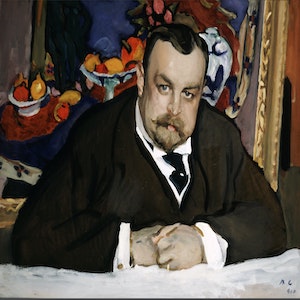A Threaded Sartorial Chapter; Vibrant in London’s East End
By Likhitha Kommu
In the heart of London’s East End, where cobblestone streets whisper tales of resilience and adaptation, a rich tapestry unfurls, woven by the hands of two immigrant communities separated by centuries but bound by shared dreams. The immigrant communities, separated by centuries but bound by shared dreams. The Huguenots, fleeing the brutal embrace of religious persecution in 17th-century France Protestants, sought solace in the vibrant embrace of London’s Spitalfields, Bethnal Green, and Whitechapel. Skilled artisans in silversmithing, watchmaking, and weaving, not only did they adorn the city with intricate patterns of silk and wool but infused its urban landscape with the economic prosperity born from their craftsmanship. Find out more here in A Threaded Sartorial Chapter; Vibrant in London’s East End
Fast forward to the late 19th century, the East End underwent another metamorphosis, this time under the influence of Jewish immigrants escaping persecution in Eastern Europe. Whitechapel and Spitalfields once havens for the Huguenots, now welcome a new wave of dreamers, Jewish tailors seeking both economic opportunities and religious freedom.
Through charitable initiatives like the visionary Charlotte de Rothschild Dwellings, the Jewish East End defies stereotypes, nurturing a sense of unity and leaving an indelible mark on London’s fashion landscape.
Stroll through Spitalfields, each cobblestone tells a tale of perseverance, intertwining the legacies of the Huguenots and Jewish communities. Their stories echo through time, resonating in the air as whispers of silk weaves and the hum of sewing machines.
But the narrative doesn’t end on the streets; it transcends to the Museum of London Docklands, where “Fashion City” beckons; a captivating exhibition unravelling the often-overlooked influence of Jewish designers.
Embark on a sartorial journey through time within the museum’s walls, where iconic pieces worn by legends like Princess Diana and EastEnders’s Dot Cotton mingle with selections from fashion giants like M&S, Moss Bros, and Wallis.
The exhibition seamlessly weaves personal narratives, oral histories, and historical artifacts into a narrative that illuminates the significant role Jewish Londoners played in shaping the city into a global fashion capital.
Waves of Jewish migrants, constituting 60% of the fashion, clothing, and textile trade, arrived between the late 19th and mid-20th centuries. The personal ephemera on show, from a child’s Kindertransport case to a woman’s leather bag fleeing Vienna in 1938 gives depth to the exhibition as well as context.
Traverse the exhibition, unravel interconnected tales of diverse immigrant communities, highlighting the mentorship and opportunities provided by Jewish employers to Caribbean tailors and Bengali seamstresses.
Discover the 19th-century elegance encapsulated in Rosenthal, Jacob & Co’s cherished possessions, once gracing the regal wardrobe of Queen Victoria. Dive into the fashion revolution sparked by Jewish entrepreneurs on London’s bustling high street, where the stories of visionaries like Cecil Gee unfold, alongside the timeless Moss Bros coat from 1910, a testament to the enduring legacy left by the community.
The exhibition’s allure extends to the intricacies of craftsmanship, as seen in the evening ensemble crafted and worn by the talented dressmaker Sophie Rabin. Uncover the poignant narrative of Anwara Begum, a Bengali seamstress sewing machine, a symbol of all the migrant contributions, resonating with personal tales and familial connections.
Amidst the exhibit’s opulence, the embroidered evening dress from the Rahvis couture house stands as a testament to the struggles faced by Jewish designers striving for recognition. Concluding the journey is the avant-garde ‘maxi-smoking’ dress by Mr. Fish, a vibrant echo of the Swinging Sixties, capturing the essence of Jewish innovation in London’s fashion tapestry.
From the craftsmanship of Jewish tailoring to the opulence of West End boutiques, this celebration pays homage to visionaries who dressed legends and transformed London into a global style icon. “Fashion City” intricately weaves threads of legacy through time and culture, inviting readers to explore the layers of history that have shaped London’s vibrant and diverse cultural mosaic.
The Whitechapel and Spitalfields area, adorned with vibrant places of worship and delectable eateries, bears witness to a storied legacy of the textile industries. From the delicate artistry of 17th-century silk weaving to the dominion of Jewish tailors and seamstresses, and now under the creative helm of South Asian entrepreneurs specializing in leather garments, the East End epitomizes London’s ever-unfolding narrative of cultural richness and industrious spirit.
Learn more about Fashion city here.
If you like reading A Threaded Sartorial Chapter; Vibrant in London’s East End Why not try reading
Embracing the beauty of Cultural Harmony: #MadeBritainGreat Exhibition Spotlight
.Cent Magazine London, Be Inspired; Get Involved.










